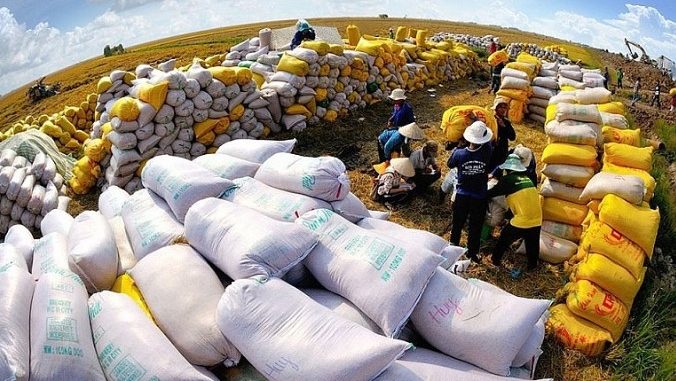
Vietnamese rice exports to China have seen a dramatic decrease, plummeting by 67.8% in the first five months of the year. This is in stark contrast to the robust growth observed in the ASEAN markets. The export volume to China reached only 203,000 tons, marking a significant decline of 67.8% compared to the same period last year.
According to the General Department of Customs, Vietnam exported 856,000 tons of rice in May 2024, which is a 14.6% decrease from the previous month. By the end of May, the country’s total rice exports had reached 4.03 million tons, an 11.2% increase compared to the same period last year, with a total revenue of 2.56 billion USD, reflecting a 33.6% increase year-on-year.
https://congthuong.vn/5-thang-xuat-khau-gao-sang-trung-quoc-giam-678-326679.html
https://vietfood.org.vn/khac-biet-trong-cach-nhap-khau-gao-cua-trung-quoc/
ASEAN Market Dynamics
Vietnamese rice is primarily exported to ASEAN markets, which accounted for 2.96 million tons, or 73% of the country’s total rice export volume, showing a 36% increase from the same period last year. Breakdown by country includes:
- Philippines: 1.83 million tons, up by 19.6%
- Indonesia: 677,000 tons, up by 83.4%
- Malaysia: 338,000 tons, up by 82.5%
Chinese Market Decline
In contrast to the ASEAN markets’ strong growth, rice exports to China significantly dropped, reaching only 203,000 tons, a 67.8% decline compared to the same period last year.
Previously, in 2023, China was Vietnam’s third-largest rice import partner, down one rank from 2022, behind the Philippines and Indonesia. China accounted for approximately 11% of Vietnam’s total rice export volume and revenue.
Historical Context and Factors
- Between 2017 and 2022, Chinese imports of Vietnamese rice experienced considerable fluctuations. In 2017, China imported up to 1 billion USD worth of Vietnamese rice products. However, by 2019, import revenue had fallen to just over 240 million USD, rebounding during 2020 and 2021, but trending downward again in the past two years.
- China’s rice import quotas have remained relatively unchanged in recent years. In 2023, the quota was 5.32 million tons, divided equally between long-grain and short-grain rice.
- Historically, Chinese rice imports represent less than 4% of the country’s total domestic rice production. High-quality rice varieties are often used for high-end consumption, while regular varieties are blended with local rice or processed and packaged under Chinese brands.
- China limits the number of rice-exporting companies. Currently, only 21 Vietnamese companies are authorized to export rice to China out of approximately 161 licensed Vietnamese rice companies.
Conclusion
While Vietnamese rice exports are flourishing in ASEAN markets, they face significant challenges in the Chinese market. Addressing this decline may require increasing the number of authorized exporting companies, adapting to market demands, and improving the quality of rice to meet Chinese consumer preferences.
